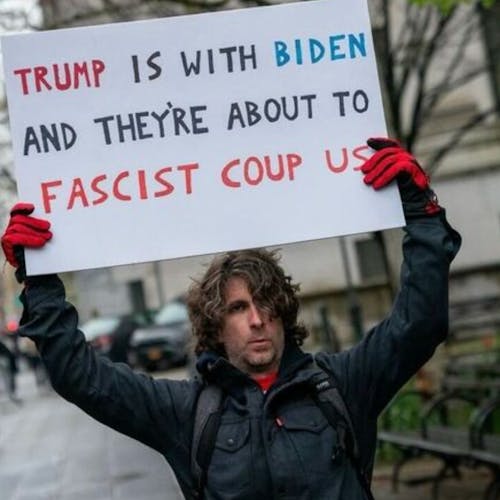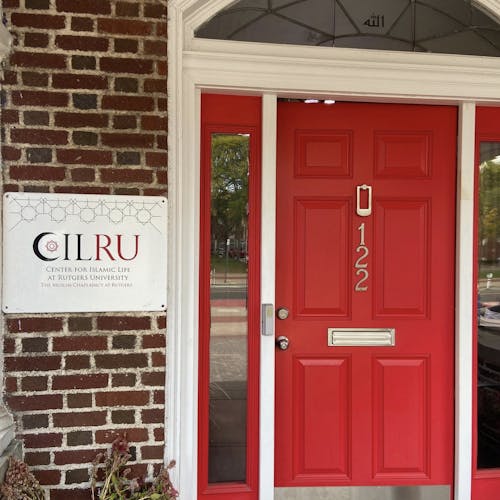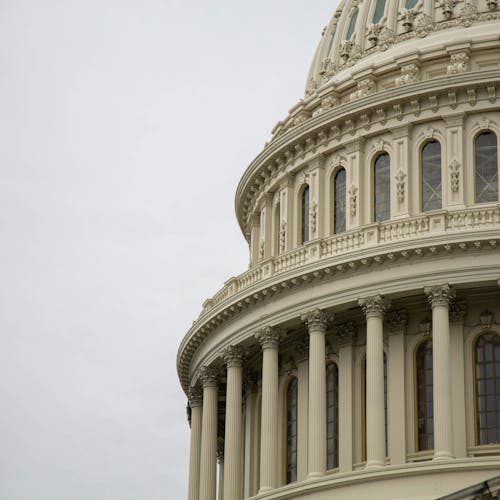Hundreds of students stage march to protest Eric Garner verdict

Approximately 250 students and community protesters flocked to the Douglass Student Center Dec. 5 to protest the Staten Island grand jury decision to not indict Officer Daniel Pantaleo for causing the death of unarmed black man Eric Garner.
The march, which began at the DSC, moved across New Brunswick, from Route 18, Route 27, George Street, the New Brunswick Police Station, Easton Avenue and ending on College Avenue.
Despite heavy rain, organizers staged a “die-in” in front of the New Brunswick Police Station to protest police brutality. The protestors also blocked traffic on Route 18 and Easton Avenue, among other streets, and caused major congestion throughout the city and its surrounding municipalities.
Beginning at the DSC, chant sheets and signs were distributed to students. Students join together to chant “I Can’t Breathe,” “NYPD-KKK, How many kids did you kill today?” and “Whose Streets? Our Streets.” Organizers of the march stood in front of the crowd to give opening speeches on the importance of the protest.
The protests prompted the cancellation of the New Brunswick holiday tree lighting ceremony and the closing of the College Avenue Student Center bus stop.
The cancellation would “better enable the Police Department to assist the exercise of First Amendment rights of the protesters … and to ensure the safety of those in and about the area," the city said in a statement.
Malcolm Steele, a School of Arts and Sciences junior and a key organizer, said he did not view the city’s decision as a way for the police to work with protestors, but rather as a way for officers to “contain” protestors.
Fawzan Lari, a School of Arts and Sciences junior and organizer, said the city’s decision merely shows that college students are given a privilege to protest.
“[The police] let us protest. They followed us and made sure we didn’t get hit by some cars, and they only threatened to arrest us when we stayed in traffic for more than 15 minutes,” he said.
The protest was organized by the same groups that led a march for Michael Brown on Nov. 25, including the People’s Coalition against Police Brutality, the Rutgers chapter of NAACP, Black Men’s Collective, Black Student Union, Douglass Black Student Congress and United Black Council.
Police officers from the New Brunswick Police Department who were guarding the crowd, refused to comment on the situation.
Ezra Sholom, one of the key organizers for the protest, said the die-int intended to “humanize the dead” and give a voice to those who no longer have a voice. He said although the police officials at the protest threatened to arrest members of the crowd a few times, it did not deter any of the protestors.
“We were not afraid of the arrest. The police did not scare us or did not force us to move, we moved because we felt we could be more effective in more places,” he said.
He said the current situation surrounding the deaths of Michael Brown in Ferguson and Eric Garner in New York as well as the verdict of no indictment in both cases were in tandem with the horrifying stories he heard from his friends and so he felt the need to spearhead a movement.
Kaila Boulware, a School of Arts and Sciences sophomore and another main organizer, said she attended the protests because the case of Eric Garner was blatant homicide and that the justice system cannot accept an officer choking a man to death for selling cigarettes.
“There is no reason that my narrative today should be the same as someone enslaved in the 1700s,” Boulware said.
Fawzan Lari, a member of the Black Student Union and was a key organizer of the protest, echoed this sentiment.
“The fact that it’s an inconvenience right now that Eric Garner is 6-feet under the ground. It is an inconvenience that Mike Brown is 6-feet under the ground ... It is an inconvenience that literally I don’t know if I’ll be next. We are trying to make as many people as possible to feel the inconvenience we are trying hurt the system in the way they have hurt us,” he said.
The black population at Rutgers needs to be valued for reasons other than just diversity, said Nadirah Simmons, School of Arts and Sciences junior and key organizer.
“We want Rutgers to feel that black lives matter. We want them to support us on campus not just when we are throwing a football and handling a basketball. We want to feel like we are not here to make your university diverse but to value our history,” she said.
Randy Jackson, a Robert Wood Johnson third-year student, described police brutality as “f-----ed up.”
“I say that because too many law officials are allowed to get away with things that us common citizens won't be able to get away with,” he said. “It’s a bullshit rebuttal because if I killed another black person, I would go to jail, but if an officer killed me, he would walk away free.”
Jasmine Dennis, a School of Arts and Sciences first-year student and protestor, said she felt empowered by the protest.
“I feel empowered when I see people from different races getting together and standing up for a cause,” she said.
Elyse Nganwuchu, another protester, said the turnout of nearly 300 people made her hopeful about bringing a change.
“I think it will have an impact there’s a protest right here at Rutgers. There’s a protest in New York City, there’s a protest in Ferguson, so I feel like the strength in numbers will eventually make a change, but we just have to keep a way to stay consistent,” Nganwuchu said.
Going forward, Lari said the goal is to get more people involved with the protest and urge students to go on strike to stop paying tuition and to stop funding the University that he believes is oppressing the students and hopefully bring an end to police brutality,



